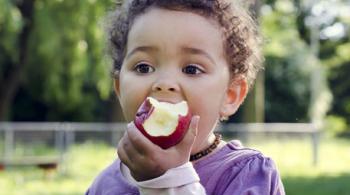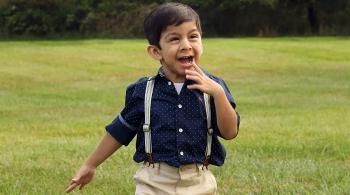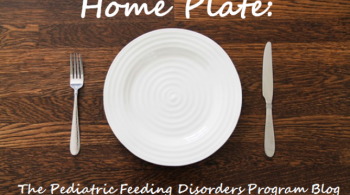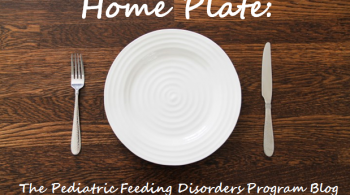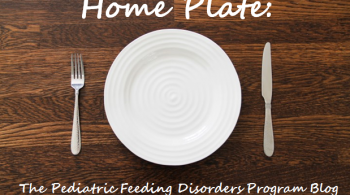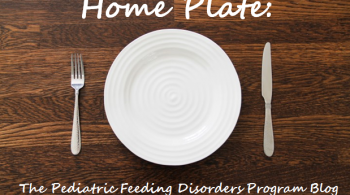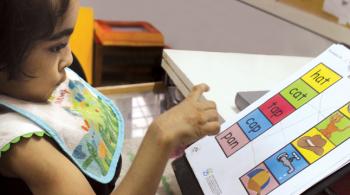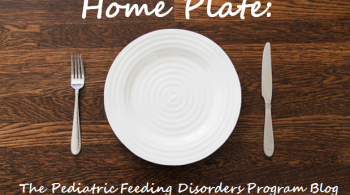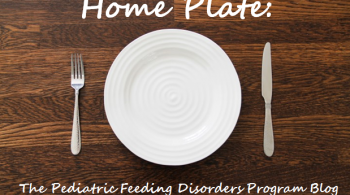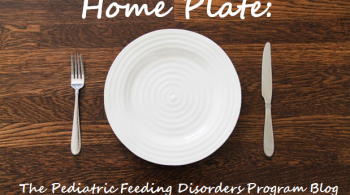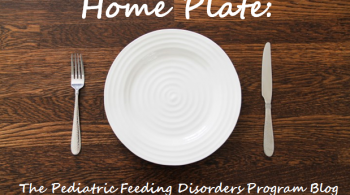Although many little ones transition easily from breast or bottle to sippy cup, or from sippy cup to open cup, some children resist these changes to their usual feeding routine. From a developmental perspective, it’s not surprising that infants and toddlers become attached to their source of nourishment and the comfort that often goes along with it. Still, we all know these transitions are eventually necessary. So when should we nudge our babes toward the next step? And how? We checked in with Hailey Ormand, a behavioral psychologist at Kennedy Krieger’s Feeding program, for a few tips.
Time for Change
The American Academy of Pediatrics recommends transitioning from a bottle to a sippy or straw-top cup by 18 months. One reason for this suggested timeline is dental health, as drinking milk by bottle leaves children’s teeth in prolonged contact with the sugars in milk (lactose), which can increase the risk for cavities. Another case for making the switch early: you may already be introducing cow’s milk around 12 months, and it’s often easier to introduce new drinks in a new cup from the start. A third reason to transition to a cup or bottle with a straw between 12-18 months is related to oral motor development. Baby bottles can interfere with your little one’s development of more mature oral motor skills, which become more important as your child begins using their first words and eating table foods. Lastly, research suggests that children who are still drinking milk by bottle at age 2 are at an increased risk for obesity later in childhood, as they tend to take in more calories throughout the day in addition to set mealtimes.
Choose Your Strategy
Start in a High Chair
Many parents choose to introduce cup drinking when their child begins eating solids and drinking water around 6 months. If your baby is still nursing at 12-18 months, skip the bottle entirely and go straight to a lidded or open cup while weaning. During meals in a high chair, present the new cup and show your child how to use it. Because your baby is most familiar with milk, it may be helpful to present your baby’s milk in the cup initially before offering water. And, believe it or not, children as young as 12 months can begin practicing with an open cup, so don’t be afraid to present a small amount of water or milk in an open cup and give your baby a chance to practice this new skill. As always, ignore any signs of resistance—such as pouting, crying or tossing the cup—and give enthusiastic praise when your child attempts to use the new cup correctly.
Go Cold Turkey
The fastest way to remove bottle feedings from your daily schedule is to do it cold turkey—don’t present the bottle—present the sippy cup instead. You can choose to drop one bottle feeding at a time or ditch the bottles all at once, but the push back from your child can make this approach difficult or upsetting for some parents. It is important to note that you have to be committed to following through if you choose to go cold turkey. Giving in after your child becomes upset only teaches them to cry or fuss until you give in, which can cause bigger problems down the road. It’s also important for hydration purposes that your child is already somewhat familiar with and able to use the new cup well enough to meet their daily fluid needs. If you opt to drop one bottle feeding at a time, it may be easier to first fade out late morning or afternoon bottles than early morning or evening bottles. Once your child is accustomed to eating solids in the morning, you can stop presenting the morning bottle. Lastly, establish a relaxing evening routine, such as eating a snack, bathing and reading a story together, before dropping the evening bottle.
Make Gradual Changes
If you’re worried your child won’t easily transition to a new cup, you can make changes more gradually. One strategy is to introduce the new cup (empty or with a preferred liquid) during a non-meal activity, such as bath time or a car ride. This approach will help your little one become accustomed to seeing and holding the cup before there is any expectation of using it for drinking. Another option is to gradually reduce the amount of milk offered at one meal by bottle or sippy cup until you’re only offering 1-2 oz., then replace it with the new cup. Lastly, you might choose to offer only water by bottle and milk by cup, or to remove the nipple or lid from your child’s preferred cup and offer it with a straw instead.
Remember the Goal
As with many other challenging aspects of parenting, keep in mind that the development of new feeding skills and routines is a marathon, not a sprint. You may have to try a few different cups before finding one that works well for your child, and you may have to try a few different approaches before your child transitions completely to their new cup. Avoid comparing your child to your friends’ kids and do what works best for your family.



